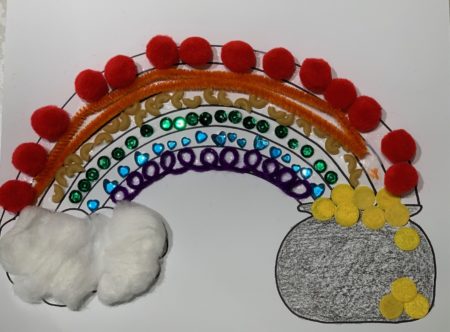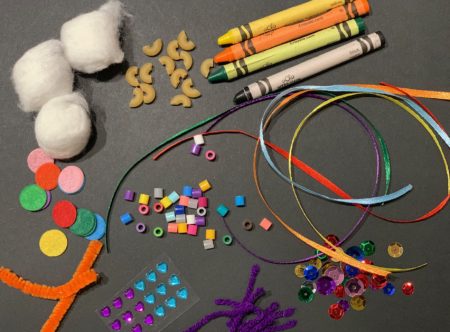The weather is finally starting to warm up, and the snow is finally melting. Right now, things look pretty dreary and dirty outside, but pretty soon, it will be bursting with color as the trees begin to bud, grass turns green, flowers start to sprout, and birds come back for the season. So for today’s sensational craft, let’s bring a little color into the world!
I am a huge proponent of anything process art. I showed you how to do Rubber Band Painting in October and Spice Art in December. Process art is all about the process or experience of creating. No two projects will look the same. It doesn’t even matter what the end product looks like, as long as you enjoyed the experience. This month, I’m going to give you a starting point, and then the rest is up to you. Sensory coloring involves using objects to “color” in a space. You can use anything you want to do this (as long as you have permission from a grown-up, of course).
Supplies needed:
- Drawing of a rainbow. You can draw your own or use this one
- Glue (liquid school glue is preferred)
- Various arts and crafts supplies in rainbow colors
- pom poms
- beads
- buttons
- pipe cleaners
- sequins
- yarn
- ribbon
- felt
- dried pasta or rice
- cotton balls
- crayons
The process of sensory coloring is quite easy. You can print out the rainbow drawing above, or you can draw your own picture. I recommend using heavier paper, like cardstock or construction paper. Heavier paper is important since you will be putting lots of objects onto the paper. Liquid glue will be the best glue if you are using larger items. Glue sticks are great, but they have their limits to what they can hold.
You can color your rainbow however you want. You’ll see in the picture above that I chose to color each section with one object of the same color. But if you wanted, you could pick different objects of the same color to fill in the space. That would have an awesome look to it as well.
What senses are active when you do sensory coloring?
- Touch: You can feel each object as you pick it up to place it on your picture. Is it hard? Soft? Smooth? Bumpy? Once your picture is dry, you can rub your whole hand over the picture and feel how your fingers move as they touch the different objects.
- Vision: So many beautiful colors! You can see the different shades of colors. Did you color with items that were sparkly, shiny, or dull?
As you can imagine, there are hundreds of picture books about colors. Here are just a few that show off colors all around the world.
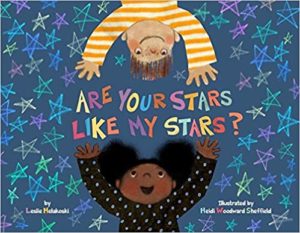
Are Your Stars Like My Stars?
by Leslie Helakoski
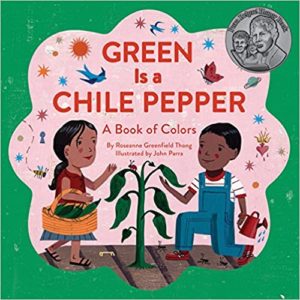
Green is a Chile Pepper
by Roseanne Thong
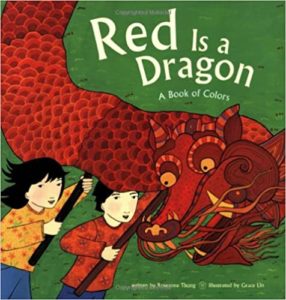
Red is a Dragon
by Roseanne Thong

